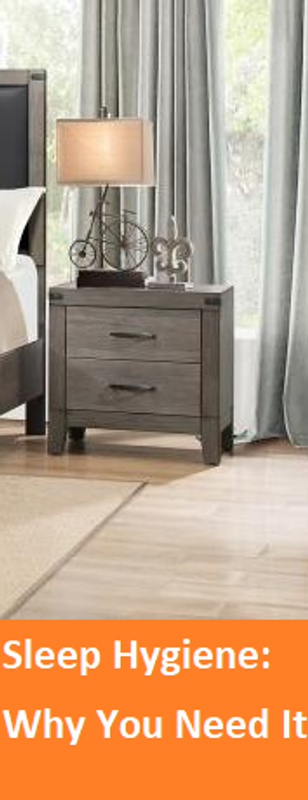The benefits of designing your bedroom to support a restful night of sleep are popping up everywhere you look. From skin care companies to lighting companies it seems like everyone wants you to establish sleep hygiene. But what is sleep hygiene exactly? The term refers to the practices that individuals put in place to prepare themselves for a restful night of sleep. It looks a bit different for everyone, but there are several similarities. Here are the highlights.
#1 Tune Out. Everything you will hear about sleep hygiene will tell you to spend the last half hour before you fall asleep each night without any electronics. This is because the blue light emitted from your devices is actually keeping you up instead of preparing you for sleep. If you do absolutely need to stay on top of those emails all night, adjust the settings on your phone to transition to “night mode” after a certain time. This will replace the blue light in your phone’s screen for a more calming yellow one. At the same time each note, plug your phone in to charge and put it out of arm’s reach. We love the Christina Nightstand for it’s spacious drawers with plenty of room to charge your phone or ipad within the drawers and out of sight.
#2: Actual Hygiene. A significant part of your sleep hygiene actually has to do with real hygiene. Establish a routine that you complete each night. Brush your teeth, floss, apply moisturizer, change into cosy pajamas, find your slippers, whatever makes you feel relaxed and ready for bed. Take time establishing the best routine for you, and remind yourself that getting ready for bed is just as important as the time you spend getting ready each morning. If space permits in your bathroom, invest in a beautiful side table. On the side table, organize your sleep routine essentials along with some beautiful flowers, or a candle. For this purpose, we love the Abbonto Accent Table.
#3: Wind Down. This is the last step before your off to dream land. Spend a few minutes walking through your house, returning things to their places, say goodnight to your children, let your pets out for one last time, write a to-do list for the next day, and then finally, get into bed. For many, there is a need for a transition from the day to sleep, it can be difficult to lay down and fall asleep immediately. Choose a selection of books, magazines, or maybe a journal to play on or in your nightstand. Then, for 15 minutes each night, before you close your eyes, spend a few minutes reading, or writing. Sleep tight!

